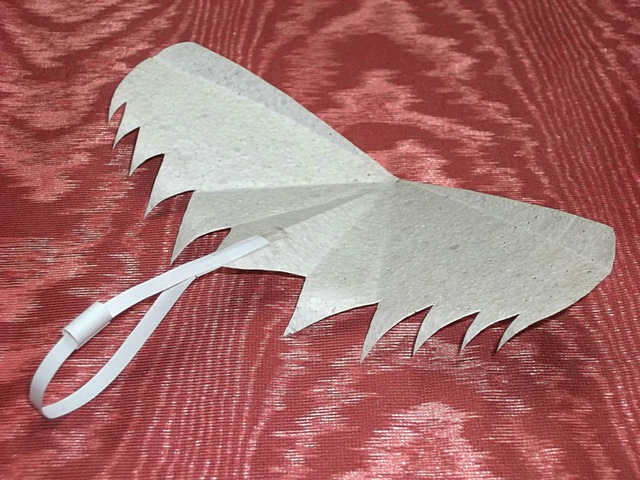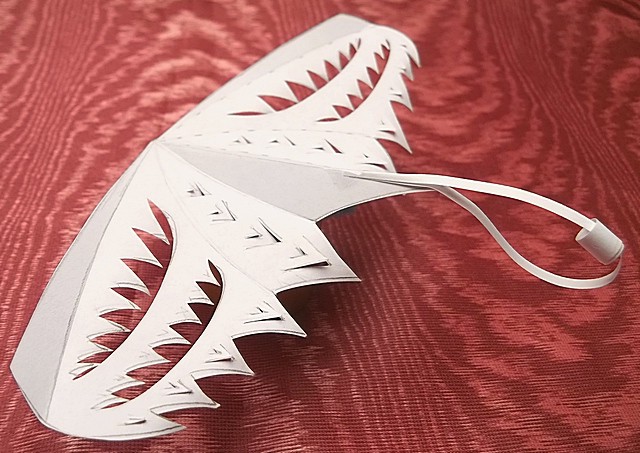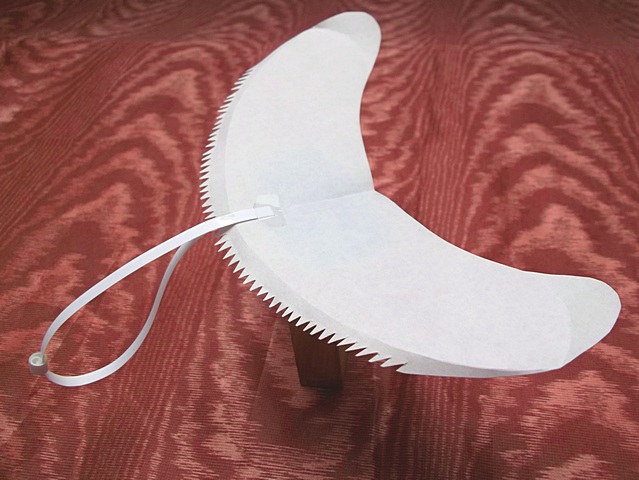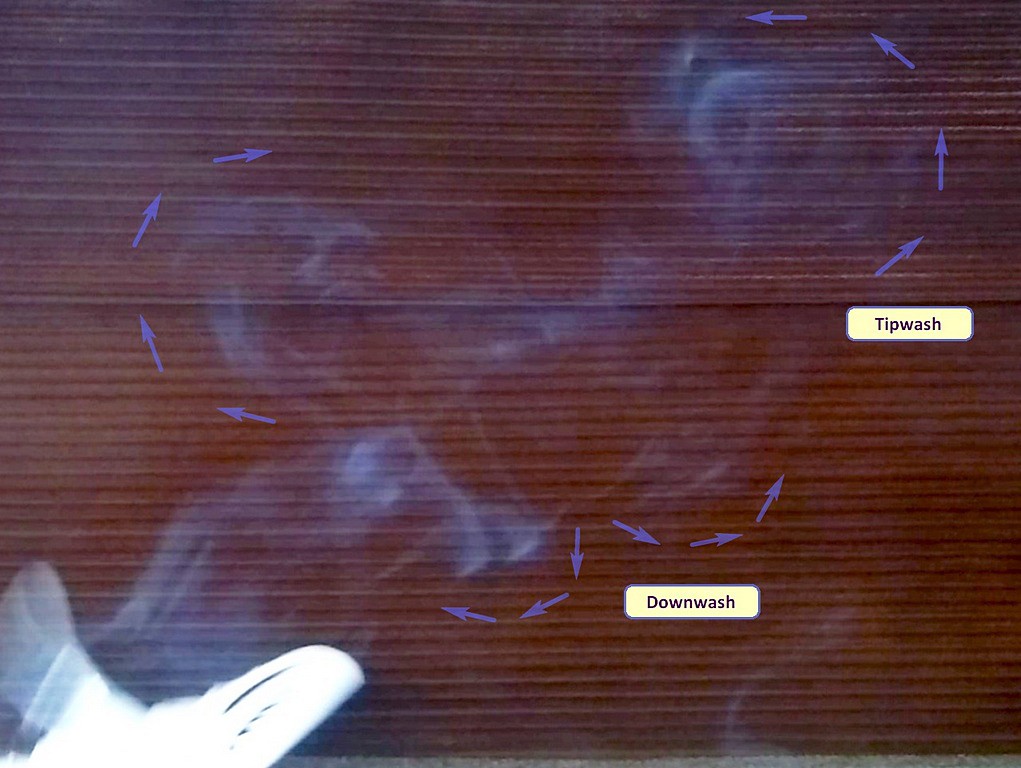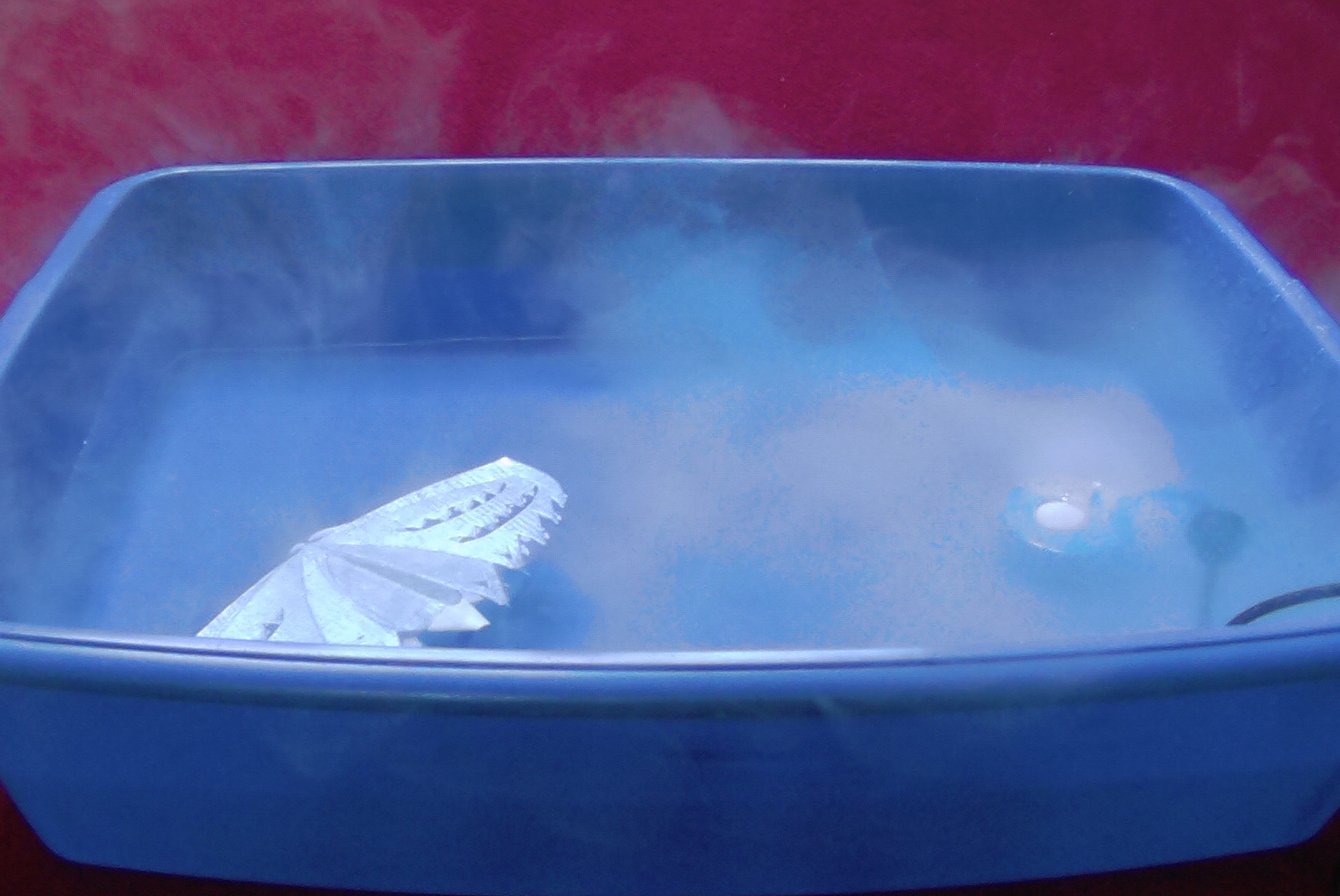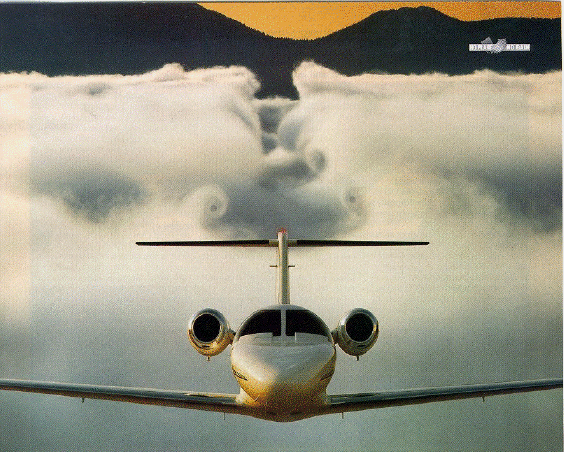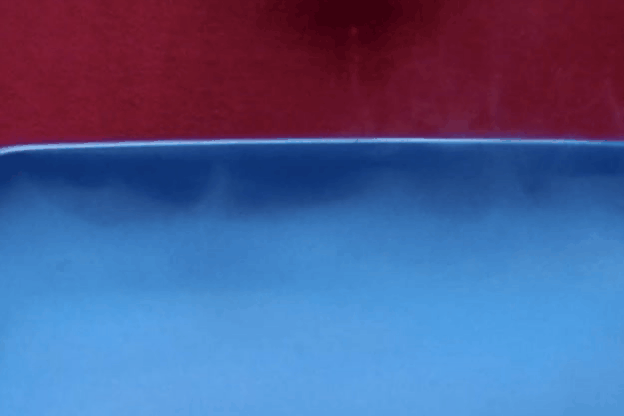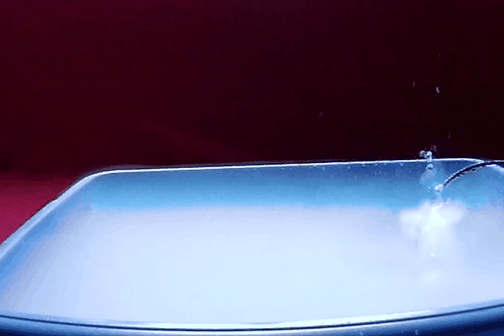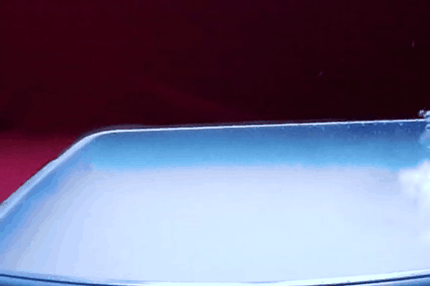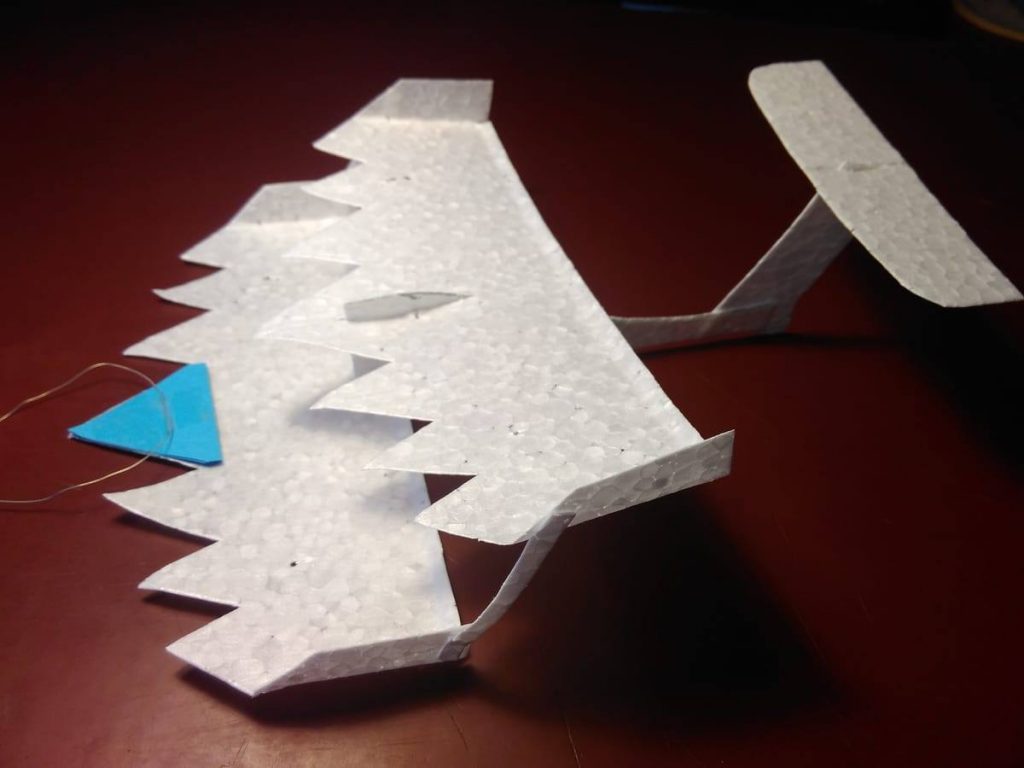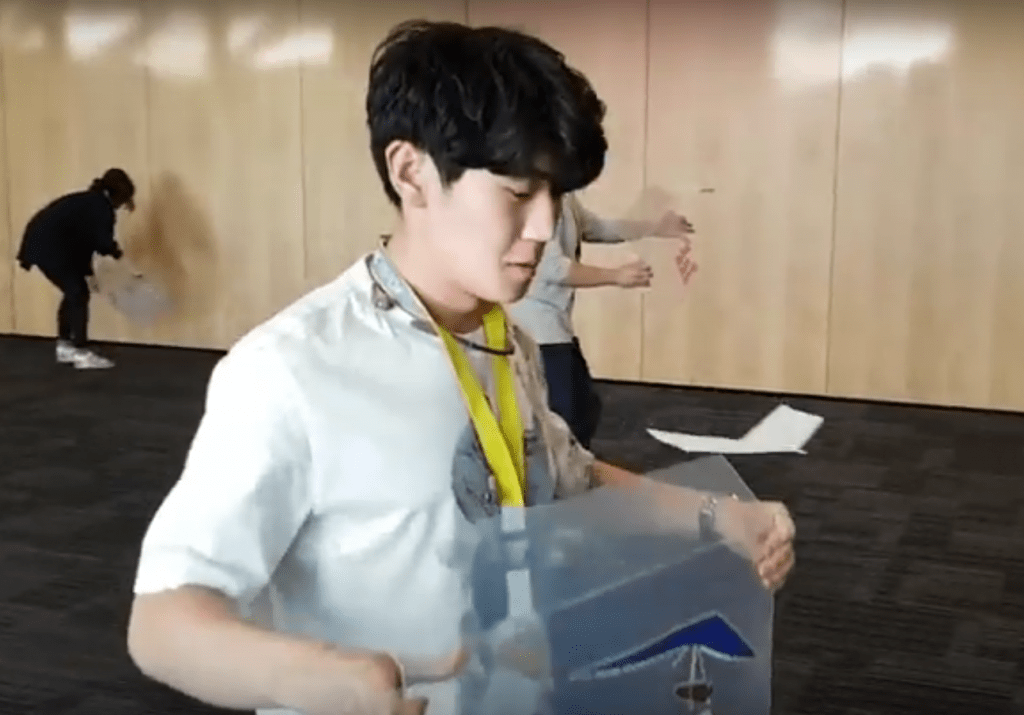Nick Schrader has done some really good work with visualizing what’s happening in the air around gliders–including walkalong gliders–using fog, and then fog and lasers!
Category: Walkalong gliders
All walkalong gliders are here
Peter Sripol
Peter Sripol is a popular YouTuber whose projects range from human-carrying quadcopters to fire trucks with flamethrowers—very creative and funny. He first made a name for himself at FliteTest.
Then, at the opposite end of YouTube Land is a nasty genre of videos about paper airplanes that fly forever—suspended between two fans or flying around in thermals over stoves or candles—all completely fake, mind you. The people who make these videos have some CGI skills and total moral deficit. To enhance the gullibility of their viewers, they dispense “helpful” hints. Can you imagine that there are people so morally compromised that they encourage kids to enthusiastically start making a project that is doomed to failure?
So back to Peter. In his video, he first dismisses the hoaxes, then experiments to see if it is possible to use real physics to make a self-sustaining glider. He starts with walkalong gliders and…well, just watch the video. Amazing!
Many YouTubers “liberate” other people’s ideas without any thought of attribution, but—gentleman that he is--Peter Sripol gives a shout-out to sciencetoymaker at the end.
Ken Evans: Visualizing Air Around Gliders
As I track walkalong glider development throughout the world, I meet really interesting people, such as Ken Evans in the UK. He sent me a picture of the most elegant Jagwing that I can imagine; almost a work of art (Mike Thompson’s Jagwing design is usually basic, simple and easy to build/fly). I was a bit guarded. Did it fly? Ken assured me that it did and started sharing his thought process:
Click to Enlarge images
"The jagwing type in the first image I sent you is just Mike's basic model with some corners knocked off. That's partly an attempt to align each jag head-on to the airflow when the wing is given dihedral and during turns, but I also just prefer curves over straight lines. Folds and corrugations hold their shape better when they are curved.
'Filigree' designs (with holes in the wings) should allow air to escape from the high-pressure zone beneath the wing into the low-pressure region above. This kind of 'bleed' is usually considered undesirable, but I think lift could be extracted from the airflow while it is moving upwards relative to the wing. One method might be to put Mike's leading-edge 'comb' at the back of a vent or slot. 'Stacking' or 'nesting' the points behind each other may be another way to achieve it.
Sliding noseweights allow very precise trim control."
Next, Ken proposed to use smoke to visualize airflow as a glider passed. I was skeptical. Lots of walkalong glider enthusiasts had the same idea, but nobody had pulled it off. Indeed, Ken’s first attempts appeared to me more like Rorschach patterns than anything visually informative, to non-experts.
But Ken was only just starting. When I mentioned the stunning images I'd seen of planes down-washing air into clouds below, he shifted from incense smoke to ultrasonic fog in a container.
The clips he sent to me neatly demonstrate how Newton's Third Law of Motion gives the lift needed for air machines to fly.
“I work as a Theatrical Technician, although my University subject was Architectural Technology. I am a keen (but mediocre) Archer, and my interest in aerodynamics followed on from studying how the arrows work.
I find Flight fascinating because there is a lot of 'design headroom'; that means a big gap between what we have achieved and what we know to be possible. The aircraft we use apply massive quantities of power in order to solve the problem of getting airborne, while birds, bats and insects use a very wide range of flight techniques to perform astonishing aerobatics or to travel vast distances, often on very little fuel.
That's the sort of thing that makes me curious, and Walkalong Gliding seems like an ideal playground for trying out new ideas (and re-examining older ones), without breaking the bank or getting injured as the pioneers of full-scale flight often did.”
Also, in the course of corresponding, Ken expanded my world with tidbits such as follows, about a flight pioneer who predated the Wright Brothers. Horatio Phillips did important work with curved airfoils and he is known for (to modern eyes) silly planes with lots of stacked wings that sometimes fell down. But Ken shared a deeper look:
“My belief is that there's a great deal to be learned from 'blind alley' developments that have been eclipsed by more 'correct' solutions which caught on and became familiar to us.
In aviation, a prominent example is the English pioneer Horatio Phillips, who did a vast amount of wind-tunnel testing on wing shapes in the 1880s. For some reason, he decided that for best effect these lifting profiles should be stacked up in huge numbers (say, 200 wings, all 18 feet span and around 3 inches chord). He wasn't completely wrong, either. His steam-powered machines generated enough lift to take off in a captive-testing rig.
Clips of similar 'venetian blind' machines are now mainly used for entertainment, because in trials for free flight the inadequately supported wing array often crumpled spectacularly. Development in any field is usually portrayed as competitive, so unsuccessful projects are routinely written off as pointless or even insane.
My guess is that the multiple wing array probably has unappreciated merit. Distracted by L-ing our A off, we haven't yet rediscovered the driving principle that motivated Horatio to stack them so enthusiastically.
Judging by your website, you still seem very excited by the diversity of thought to be found in the field of miniature aviation right now.”
Ultra-Light Glider Starter Pack
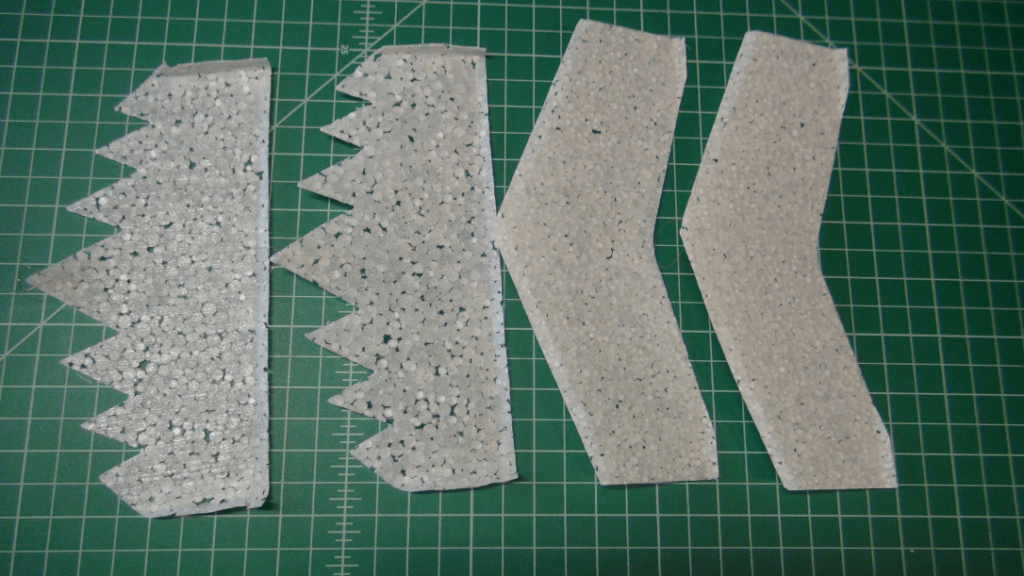
2 Jagwing gliders (4 kg/㎥ foam)
2 Baby Bug gliders (6 kg/㎥ foam)
Price and Shipping
US Customers
Read these notes before ordering
U.S. customers: $9 USD + $3.50 flat-rate shipping
(even for multiple orders gliders, which are sent in a single box).
International Customers
Read these notes before ordering
You can change quantity after adding to the cart.
International Customers: $9 USD + $14 flat shipping rate (but if you ordered anything else, we might be able to combine products so you do not have to pay for postage twice; send me an e-mail).
$14 is our actual minimum cost that we pay for postage up to 8 ounces (227 grams). This is the least expensive shipping method and IT IS SLOW!
If you buy a box of another product we can usually tape it together and still weigh less than 227g. If you can contact me, I can calculate an exact PayPal invoice.
More about international postage–delivery time, faster delivery, cost, etc.
If possible, please provide a telephone number in the PayPal page for if there is a delivery problem.
2 Jagwing gliders made from 4 kilograms/cubic meter foam; 2 Baby Bug gliders made from 6 kg/㎥ foam (for comparison, air itself is 1.25 kg/㎥; “regular Time Warp" foam is 10-11 kg/㎥; water is 1000 kg/㎥). Because these gliders are made from such low-density foam, they fly very slowly—so you have time to think and react—excellent for learning to fly! But handle them carefully and find a place with very calm air to fly.
Watch the video about Ultra-Light foam.
If YouTube is blocked for you, try this (heavily compressed) video file (15.8MB MPEG)
This video is about learning to fly gliders Here is how to fly.
Here are tips about teaching groups to fly air-surf gliders.
Read these notes before ordering.
Below is text of the narration from the video
Hi it’s Slater
There is a kind of foam walkalong glider that is so lightweight, so slow flying and so maneuverable that it’s in a class of it’s own.
They might look a little like paper airplanes, but they have characteristics more like the indoor airplane models that are ultra light, ultra slow-flying—and require still air and careful handling. (Mike Duran footage of indoor planes.)
Ultra ready-to-fly gliders are made from EPS foam with a density of 4 to 6 kilograms per cubic meter. That’s less than 5 times the density of air itself (for comparison, water is roughly 800 times more dense than air). Ultra foam is even lighter and slower flying than regular Time Warp gliders.
If you are just learning to fly—including hands-only flight—the slow Ultra gliders are ideal because you have time to think and react. If you only have a small, cluttered room to fly in, Ultra gliders are maneuverable enough to fly around stuff.
Handle gliders very carefully; Ultra tears easily. That’s the trade-off: lightweight and slow flying; but super delicate.
In dry weather, keep an eye out for static cling. You probably will not see it this bad, but mild static cling leads to board takeoff problems—flipping over and careening to the side. It usually comes from sliding the glider into position—the rubbing creates static electricity. So always pick up your glider instead; don’t slide it. If static cling is not too bad, you can launch by hand so the board never gets close enough to stick. Holding the glider over steamy water vapor discharges the static cling in seconds.
The Ultra foam we use, EPS, strands for “expanded polystyrene”, the white foam that looks like this when you break it. It’s sometimes incorrectly called “Styrofoam”]]]]]. EPS is NOT all the same, but even the heaviest EPS is much lighter than paper, and more rigid than paper. The little white spheres are expanded from beads in a process somewhat similar to popping popcorn. But for EPS, an expanding gas called pentane is used. Pentane is heavily regulated in the west and Japan.
Pentane is less regulated in China, so China seems to be the only country that manufactures really low-density EPS. The lowest density foam in China is about 4kg/M3. It flies very well, but has big beads and big gaps in-between that some people don’t like, so I usually send out 6kg/M3 gliders. Lowest density foam in North America is 10kg/M3
So my only supply of Ultra foam is from a store where my friend Rob Beiter helps me collect and recycle it. It’s used in packaging for the small proportion of furniture and other items imported from China. The irony is not lost on me: it starts out as humble cushioning that’s intended to be just thrown away upon arrival. But when we find the right stuff, there’s a profound transformation into elite gliders weighing little more than the air they displace. There must be a metaphor in that.
Ultra foam is more expensive because sorting involves weighing and measuring each piece to calculate density. Only a small fraction of the supply is usable. Then the various little scrap pieces have to be custom cut to size.
The other kind of foam-- regular Time Warp Foam--is much less expensive because I can buy it in giant, uniform blocks. It’s a little stronger and the best for large groups. It’s more dense than Ultra (10K KG/M 3) but it still flies quite slowly, especially if you start with the Jagwing design. And you can still maneuver in small spaces.
****As well as fly using only your hands to divert the air up, that the glider surfs on.
Unfortunately, foam plates and trays are much denser and thicker.
You can read more about different densities of foam, cutting your own foam and more, by following the links.
František in the Czech Republic
I received this picture and video from František, a young man in the Czech Republic. František cut his own foam, experimented with the Baby Bug and Thompson Jagwing gliders; and he created this elegant, charming biplane from 2 Jagwings. His glider also has a tail, and his video shows very well the challenge. If the updraft of air hits the glider more in the back or the front, then the glider dives or stalls. I have asked František to experiment with holding the board at a less steep angle and see if it is any easier to fly. David Aronstein has created many walkalong glider designs with tails, and in his interview did a great job of explaining the challenges and how to mitigate them. Thomas Buchwald , Mike Thompson and Heinrich Eder have all created cool walkalong glider designs with tails.
KTG 10 and His Little Brother
I really like this video. It appears that this young man hands off the camera to his little brother and then demonstrates formidable flying skill. He reports that he made the front weight from scrap copper wire. I now advise people to start with the Jagwing because the Baby Bug is more complex; but this young person got it right--perhaps an aerospace engineer in the making!
Jagwing Ready to Fly Class Fleet 30 Gliders
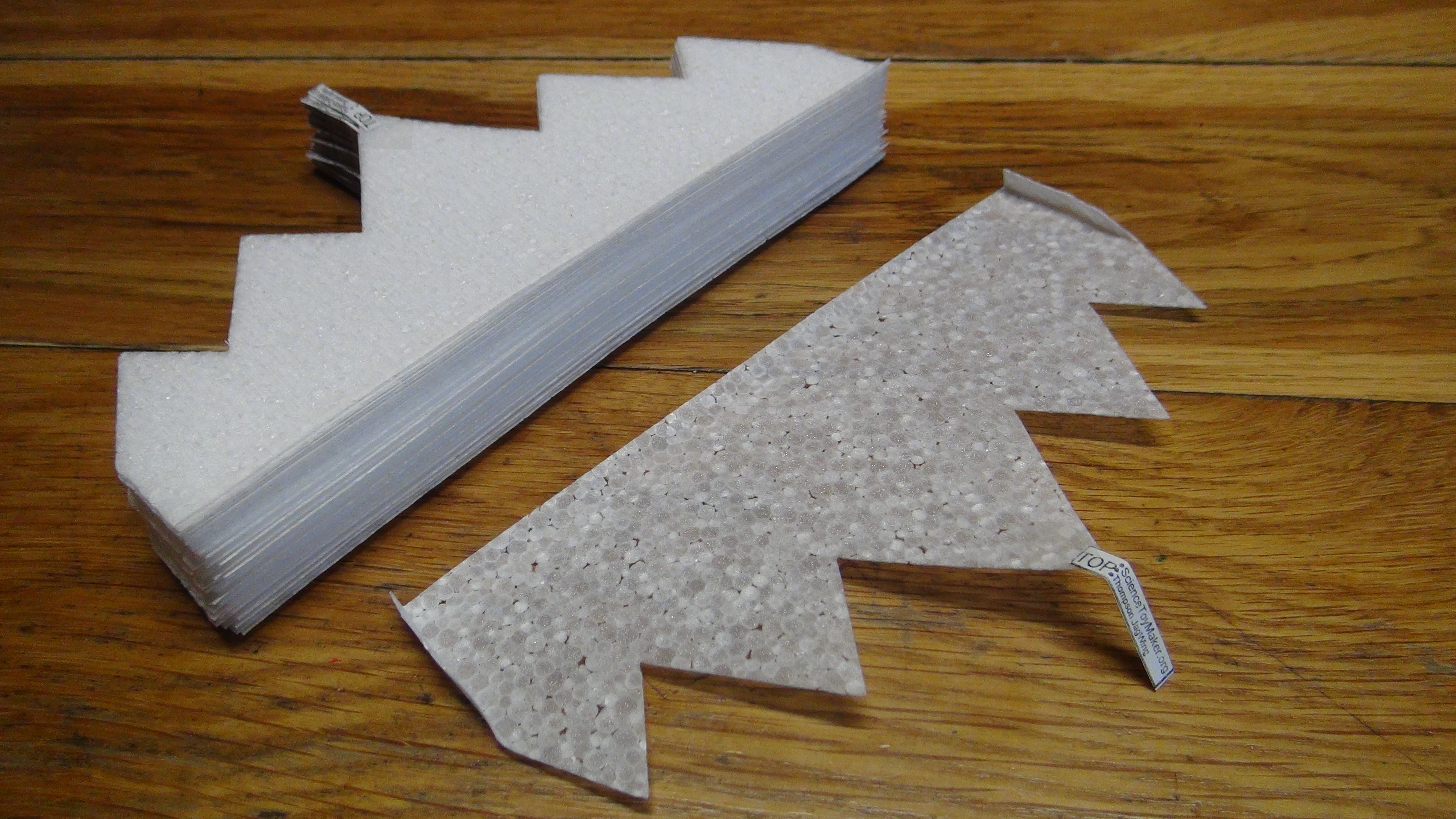
30 Ready-to-Fly Jagwing (10kg/㎥ foam)
Price and Shipping
US Customers
Read these notes before ordering
U.S. customers: $21 USD + $5 flat-rate shipping
(even for multiple orders gliders, which are sent in a single box).
International Customers
International customers: $21 USD + and please contact me for shipping cost.
I will need a postal address to find out the price.
By default we use the least expensive shipping method and IT CAN TAKE UP TO A MONTH!
More about international postage–delivery time, faster delivery, cost, etc.–is here.
If possible, please provide a telephone number if you think there might be a delivery problem.
About Payment
A Note About Payment
PayPal
Embedded PayPal buttons for customer convenience and security have worked well and automatically convert currencies. When you click on a button, you go to a secure PayPal page. Even if you do not have a PayPal account, you can still just use a credit card. All proceeds go directly to the non-profit, education organization, the Physics Factory.
Checks
If you send in a check, please make it out to Physics Factory. Feel free to contact me, Slater, with any questions.
Note: I heard from some people who said that a minimum of 40 gliders is too many, so I switched to 30 gliders standard. However, if you need a few more just contact me and I can provide whatever number you want, prorated at 70 cents per additional glider. I can send a PayPal invoice for the correct amount.
I think that the Jagwing walkalong glider is the best to start with for most people. Although Jagwings are not the most efficient glider, they are very flight stable and they are still efficient enough that I can fly them hands-only. This YouTube video has a few rough editing patches, but is still the best for getting you started surfing walkalong gliders on a wave of air and understanding the science.
Glider size is about 4" X 8" (about 10cm x 20cm) and 0.8mm thick. The foam is thin to be lightweight enough to fly amazingly slowly, so it has to be handled carefully. You should be aware of the sensation of feeling in your hands whenever handling the gliders.
When you are teaching other people to fly is not the time to be figuring it out yourself. Practice ahead of time!
Discounts: I do not discount for quantity. However, I am aware that many hands-on science education programs are gallingly underfunded. Indeed, sometimes leaders are paying for supplies out of their own pocket. I don’t have an application form, but if you contact me and briefly explain your circumstances, I’ll see what I can do.
Protected: Cool Stuff and Links
An Update from Dr. Tim Swaits
Dr. Tim Swait just sent this video of Korean students beginning to fly walkalong gliders.
He wrote:
Slater, still getting lots of use from your walkalong gliders! Here’s a group of Korean students we gave them to. I find that it works well if you want to introduce a competitive element to run a relay race. Split the group into teams, every person has their own glider but one board per team. The board then acts like the relay baton that they pass on at the end of the room. If people want to be competitive then they can add extra weight to increase the wing loading and make the glider fly faster! It was interesting to do a comparison between a glider trimmed for min sink rate (minimum possible amount of weight as far forwards as possible, min possible washout), one trimmed for max glide (a little more weight but not so far forwards to maintain a slightly rearwards CG position still with min washout) and one trimmed for racing (much more weight and max washout), not very efficient but very stable and if you can run fast enough to keep up with it then you’ll get across the room most quickly! –Tim
More about Dr. Swait and walkalong gliders.
Cut Your Own Foam Kit
We no longer sell the hotwire foam-cutting kit because now there are several good ways to cut precisely without the special bronze machined part. Learn more about here.

